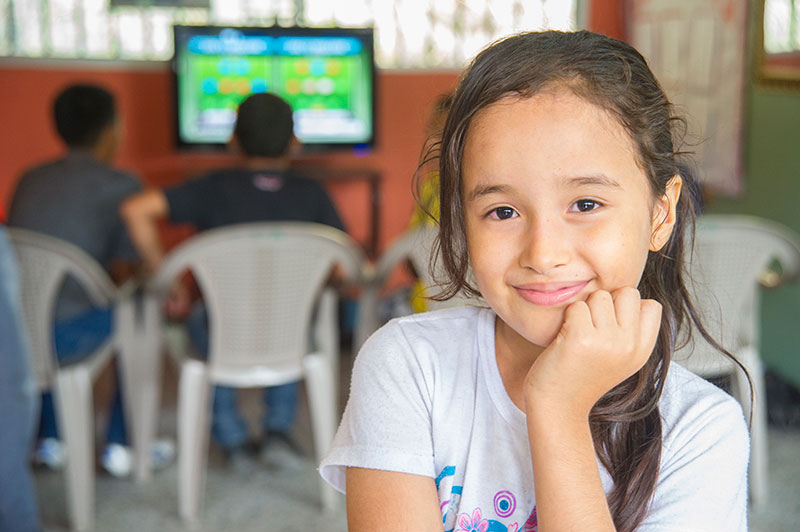Proposed 2016 USAID Budget Includes Targeted Investment in Central America
By Jennifer BrooklandFebruary 6, 2015
The President’s 2016 fiscal year budget proposes $1 billion for the U.S. Agency for International Development to improve economies and resilience of Central American countries.
These account increases “aim to advance economic prosperity through reducing poverty, improving education and workforce development, and strengthening resilience in the region, all of which address underlying factors responsible for the continued flow of migrants from the region to Mexico and the United States,” according to the budget request.
The proposal seeks funding for a “whole-of-government” approach especially targeted at El Salvador, Guatemala and Honduras, with $541 million in development assistance funding designated for programs that promote prosperity, governance and security.
Guillermo Cespedes, a crime and violence prevention advisor with Creative Associates International, says this is an important move for the United States.
“USAID has recognized the need for data-driven, place-based differentiated approaches that include tertiary, secondary and primary prevention along with community policing, all implemented simultaneously in geographic locations with the highest levels of violence and focused on those individuals most at risk of being victims or perpetrators,” Cespedes says.
The expert, who was the Deputy Mayor of Los Angeles before joining Creative, says “the science supports that this is the most effective strategy to reduce violence and those of us in the field are very encouraged by the adoption of this approach by USAID.”
A three-pronged plan with a focus on youth
 USAID’s development assistance to Central America will fall along three overarching “lines of action,” according to the budget request.
USAID’s development assistance to Central America will fall along three overarching “lines of action,” according to the budget request.
To promote prosperity, USAID seeks to integrate regional markets, promote better education and vocational training, and create more inclusive economic opportunities for women and vulnerable groups.
It hopes that nurturing healthy business environments that include youth will encourage entrepreneurs who can operate above board, instead of contributing to the region’s swollen ranks of illicit groups that undermine security and government institutions and dampen legitimate economic activity.
The budget request makes specific mention of the need to boost opportunities for entrepreneurship and job placement for vulnerable youth to provide alternatives to violence and greater resilience for households and communities.
(Read about the young winner of a business competition who’s turning his life around with hamburgers.)
The agency’s other two focus areas are on enhancing security and promoting improved governance, which includes bolstering government services and providing support to civil society and the media.
All three lines of action are ultimately key to reducing the region’s endemic violence, economic inequality, poverty and corruption.
According to Cespedes, USAID is smart not to attempt to drive down violence as if it existed in a vacuum.
“USAID has stated clearly that violence reduction is a cross cutting theme that is interrelated with all strategies including economic development, education, and governance. It is a critical component of the overall (approach in) Central America,” he says.
The budget request points out that these initiatives will complement the work of national governments and multilateral development banks, and support national and regional priorities and plans.
“Without significant progress, the region will continue to face extreme violence, severe economic inequality, social exclusion, and widespread corruption and poverty, thus compelling many Central Americans to flee their homes each year,” according to the budget request.
Budgeting for a change
The request for development assistance in the Northern Triangle of Central America shows the administration’s continual attempt to thwart thousands of migrants fleeing violence, corruption and economic insecurity at home.
Gang violence and narco-trafficking has resulted in Honduras, El Salvador and Guatemala having some of the highest homicide rates in the world outside of active war zones, and the region been a major source of unaccompanied minors immigrating to the U.S.
Last year’s budget included no reference to Central America.
Other USAID focus areas will include Asia and Africa, as well as initiatives to strengthen democracy, maternal and child health, and science, technology and innovation.
Together with the funding for the State Department, the federal budget request comes to $50.3 billion—a 6 percent increase over the 2015 enacted level and a nearly 9 percent increase over the 2015 request.
“The Budget proposes targeted investments in international programs that will help mobilize collective action to meet global challenges, counter terrorism and violent extremism overseas, strengthen the U.S. economy, and support United States citizens and the U.S. presence overseas,” according to a fact sheet released by the State department.
Altogether the amount makes up around 1 percent of the entire federal budget.

